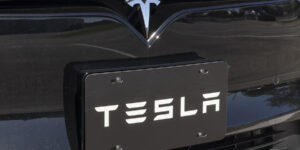If you’re reading this blog, then you are likely interested in learning more about how you can make your company’s property insurance underwriting process more efficient while optimizing your survey budgets. Although there are many misconceptions about the complications and expense involved with automating underwriting, a good software solution is surprisingly easy to integrate into legacy systems and could even return four to seven times your initial investment.
If this sounds too good to be true, keep reading for the top five reasons you should continue down the path of modernizing property underwriting across your entire enterprise.
Set pace with industry leaders
Top carriers are already using an end-to-end software solution to standardize and automate their underwriting process. These carriers are experiencing the benefits of a standardized underwriting process, integrated inspection management, automated referrals and exposure assessment, enterprise-wide agility, and rich, fully integrated property content. Those carriers slow to adopt an underwriting automation solution because they think they can’t afford it, run the risk of being outpaced and adversely selected upon by carriers who have modernized underwriting across their entire organization.
It’s self-maintainable
A Software as a Solution (SAAS) platform is self-maintainable and doesn’t require an army of IT professionals to integrate into your existing workflow. A good solution should leverage and continuously update property exposure data and include built-in algorithms that recycle results from all points of the property lifecycle back into the decision models so that you can continue to increase your ability to auto-underwrite whenever possible.
It provides alternatives to physical surveys
Today’s virtual surveys offer a superior level of insight that can allow underwriters to optimize survey budgets by ordering more costly physical surveys only on the properties they deem the biggest risks. A virtual survey that leverages current, high-resolution imagery, proprietary MLS interior and exterior pictures and robust property characteristic data can be ordered near real time (+/- 10 minutes) and allow the underwriter to record risk observations. Plus, virtual surveys are completely non-intrusive to homeowners and are a fraction of the cost of physical surveys.
Another less costly and more recent alternative to physical surveys gives carriers the ability to engage with homeowners by giving them the option to conduct a “Do It Yourself” or DIY survey. A DIY survey is conducted by the homeowner using a carrier’s or third-party’s smart phone application.
When all three survey options—physical, virtual, and DIY—are integrated with the Underwriting automation platform, rules can be set as to when to order each option giving the underwriter greater flexibility in managing risk selection as well as survey budgets. Plus, all data is collected and stored in a single repository to be leveraged for future decisioning.
Access and functionality for agents and homeowners
An underwriting automation platform should help in optimizing inefficient communications between carriers, agents and homeowners. Agents will appreciate the opportunity to check policy status, view survey results, ask questions or upload additional information for underwriting consideration. The solution should also provide an opportunity for a better consumer interaction by giving homeowners the option to add additional comments or photos.
You could get a big return on your investment – four to seven times*
Automating your underwriting process could save you money; significant savings that increase year over year as the decision models continue to harness property data as well as your data intelligence to further automate underwriting. This type of deep learning not only drives loss cost avoidance, but you could also realize more accurate exposure assessment and cost savings from labor and vendor management efficiencies.
Click here to learn more about the benefits of property underwriting automation.
*Joint analyses conducted with over ten of the top 100 carriers showed efficiency gains of between four and seven times the return on their initial investment.
© 2019 CoreLogic, Inc. All rights reserved.




















 The Latest Launches: Click for Cyber Insurance
The Latest Launches: Click for Cyber Insurance  Munich Re Specialty Launches FAIR Plan Commercial Wrap Product in California
Munich Re Specialty Launches FAIR Plan Commercial Wrap Product in California  USAA to Lay Off 220 Employees
USAA to Lay Off 220 Employees  Uncertainty Keeps Prices Up; No Prior-Year Loss Development: Travelers
Uncertainty Keeps Prices Up; No Prior-Year Loss Development: Travelers 



